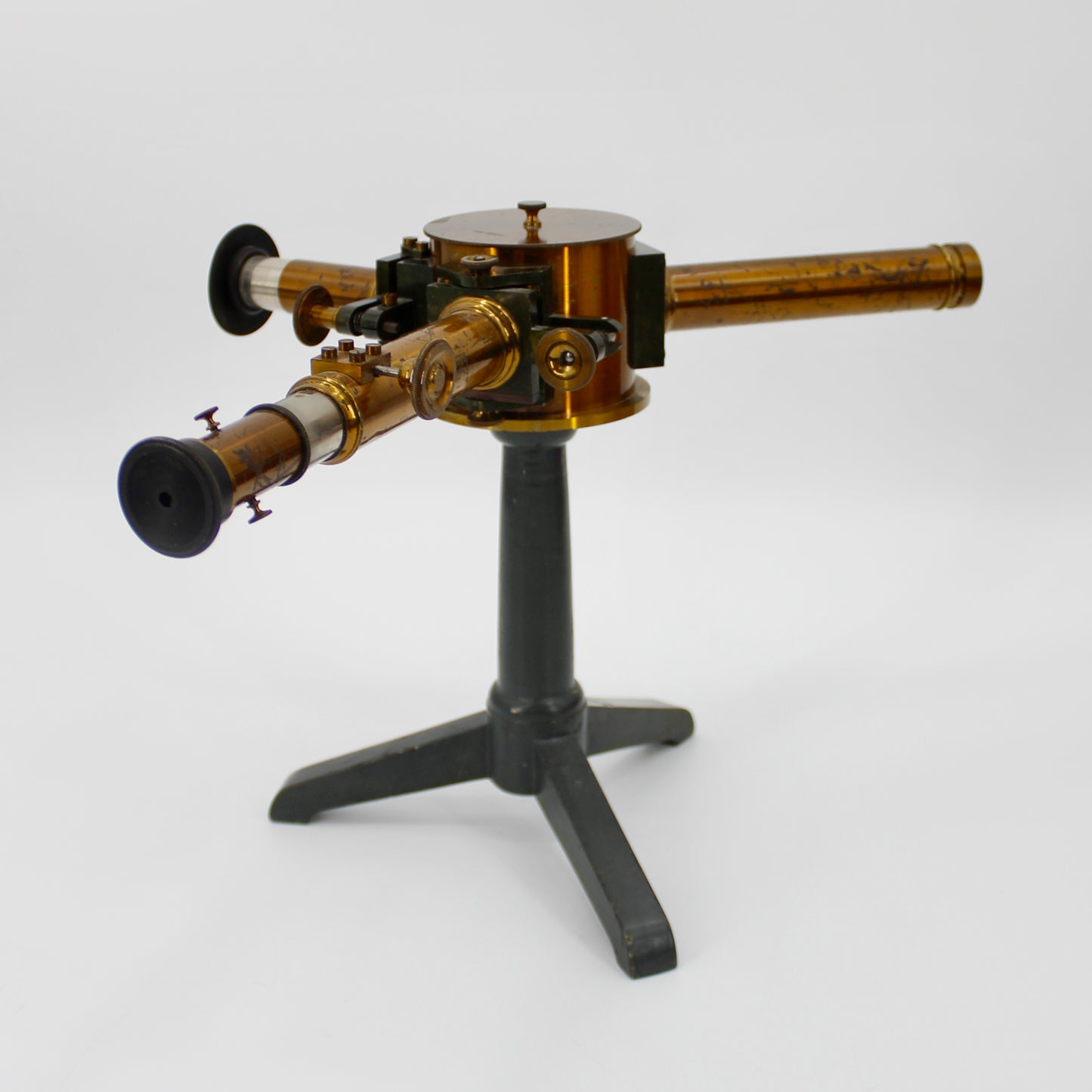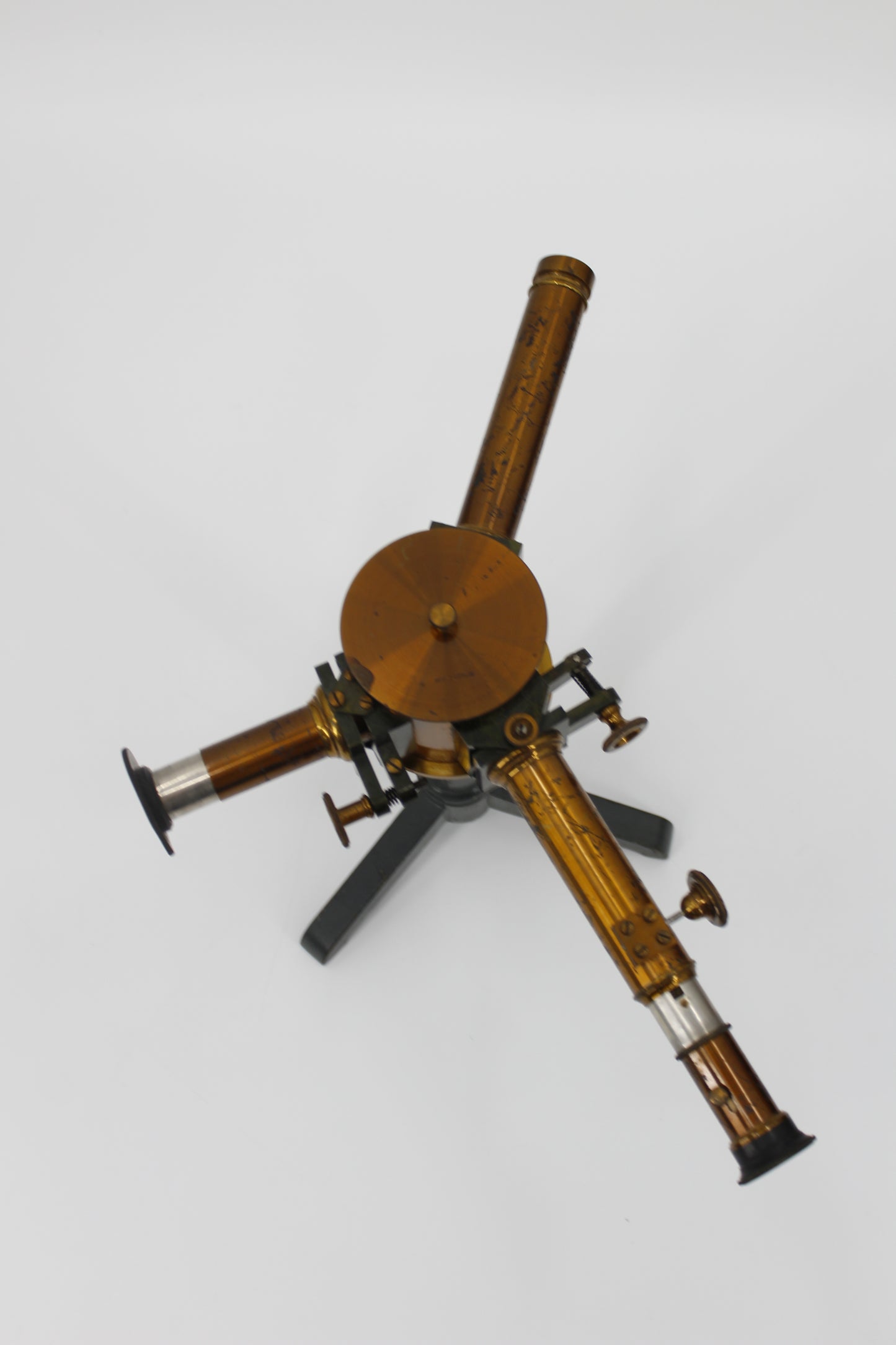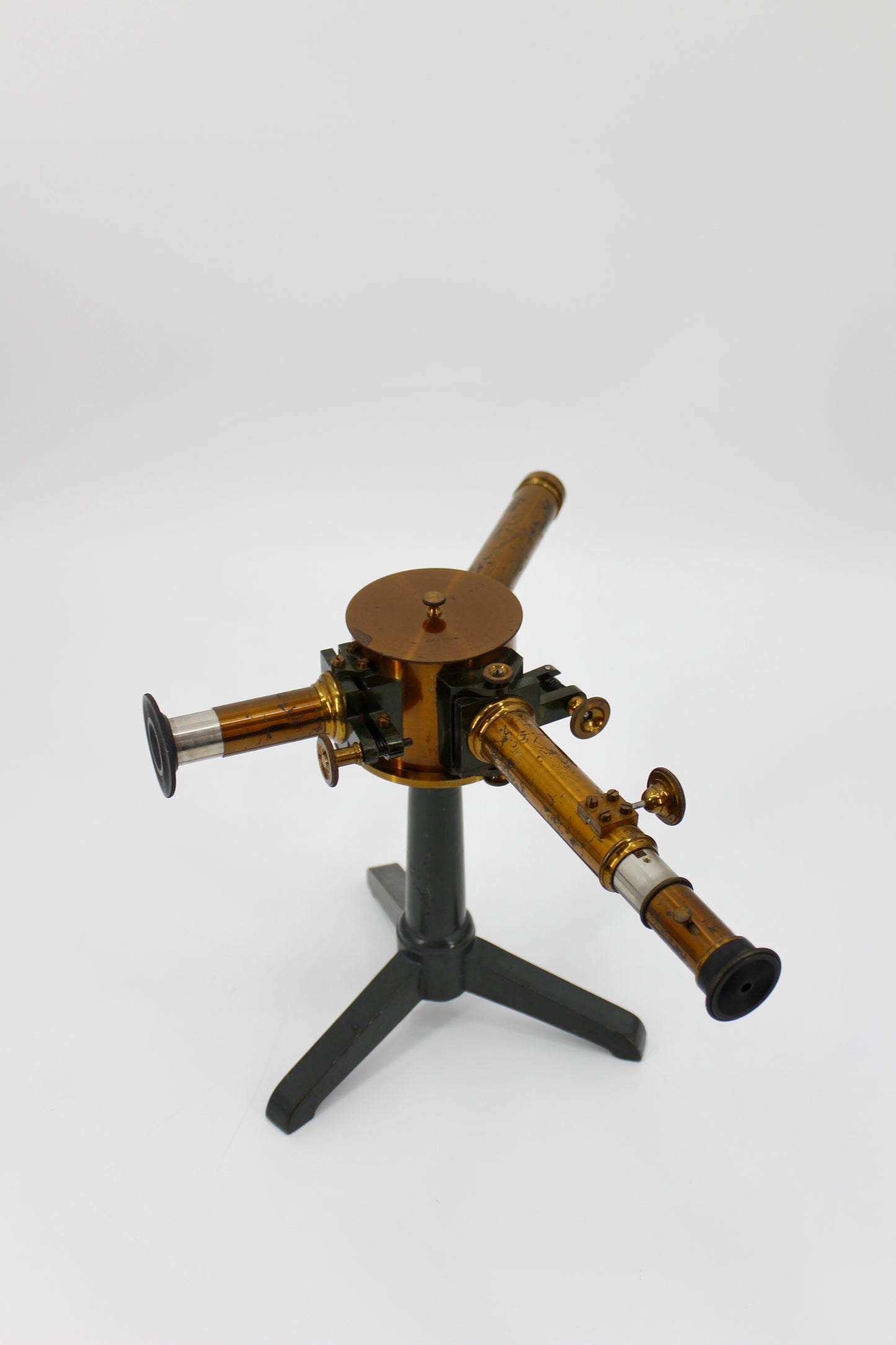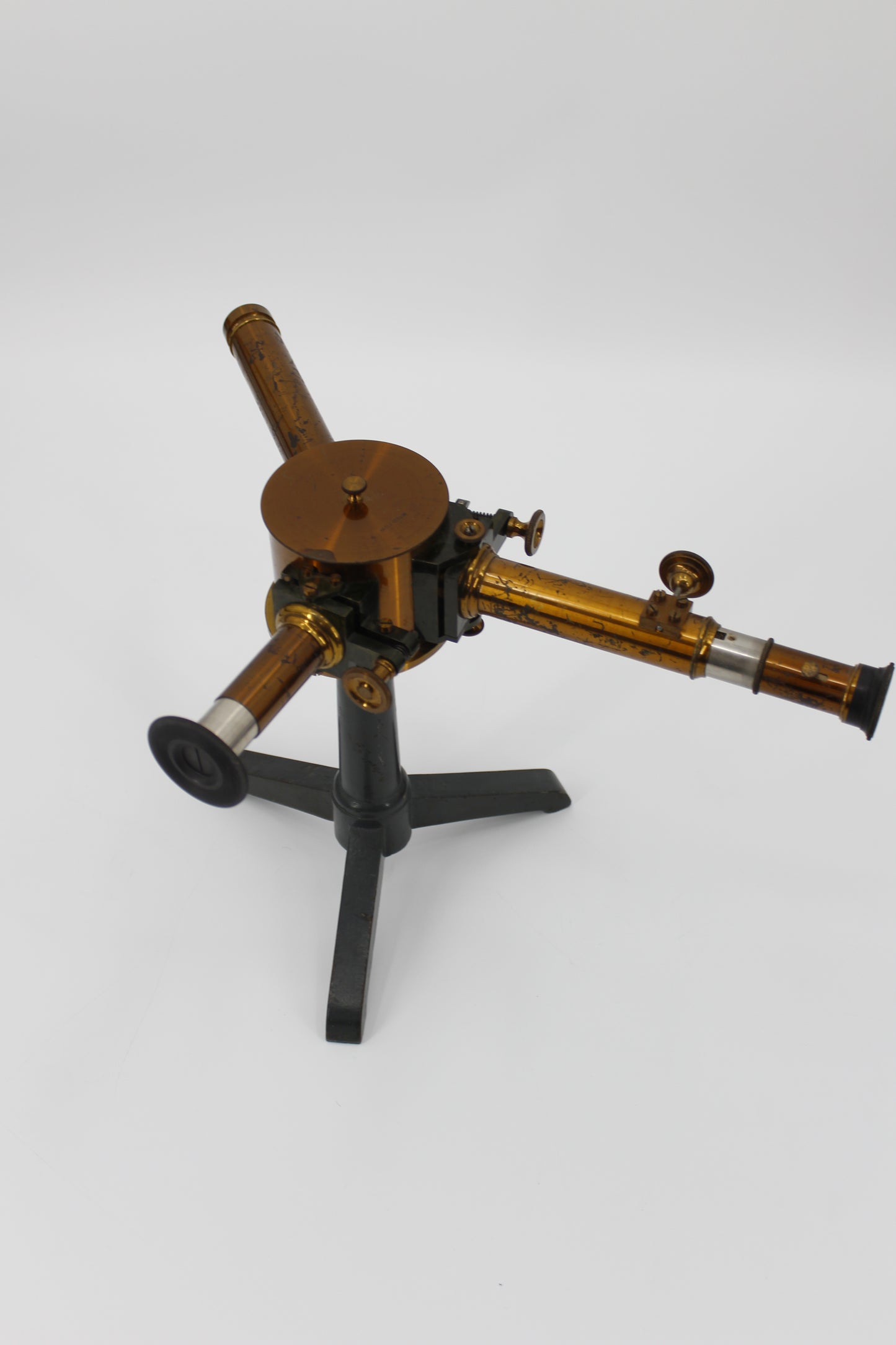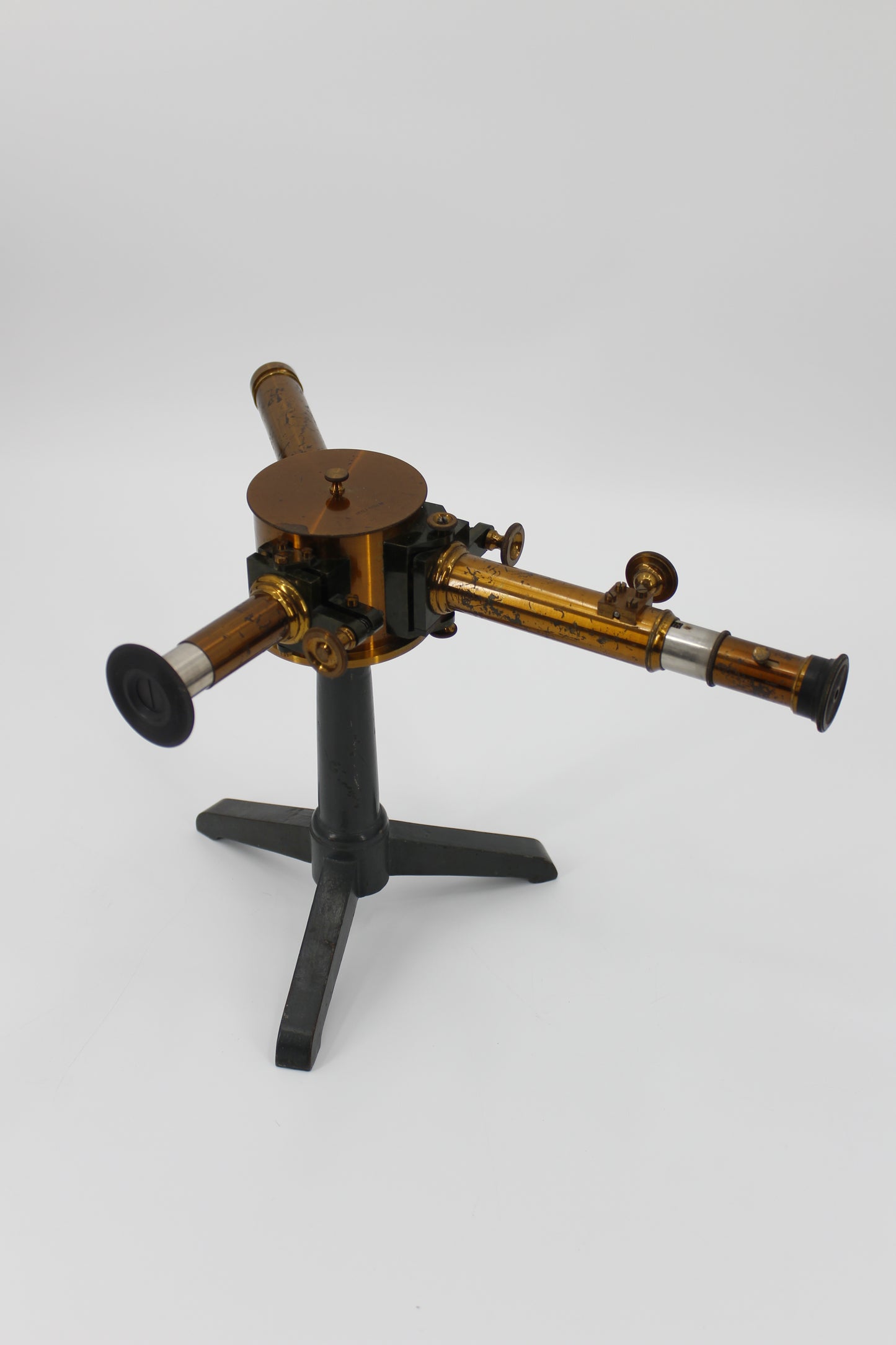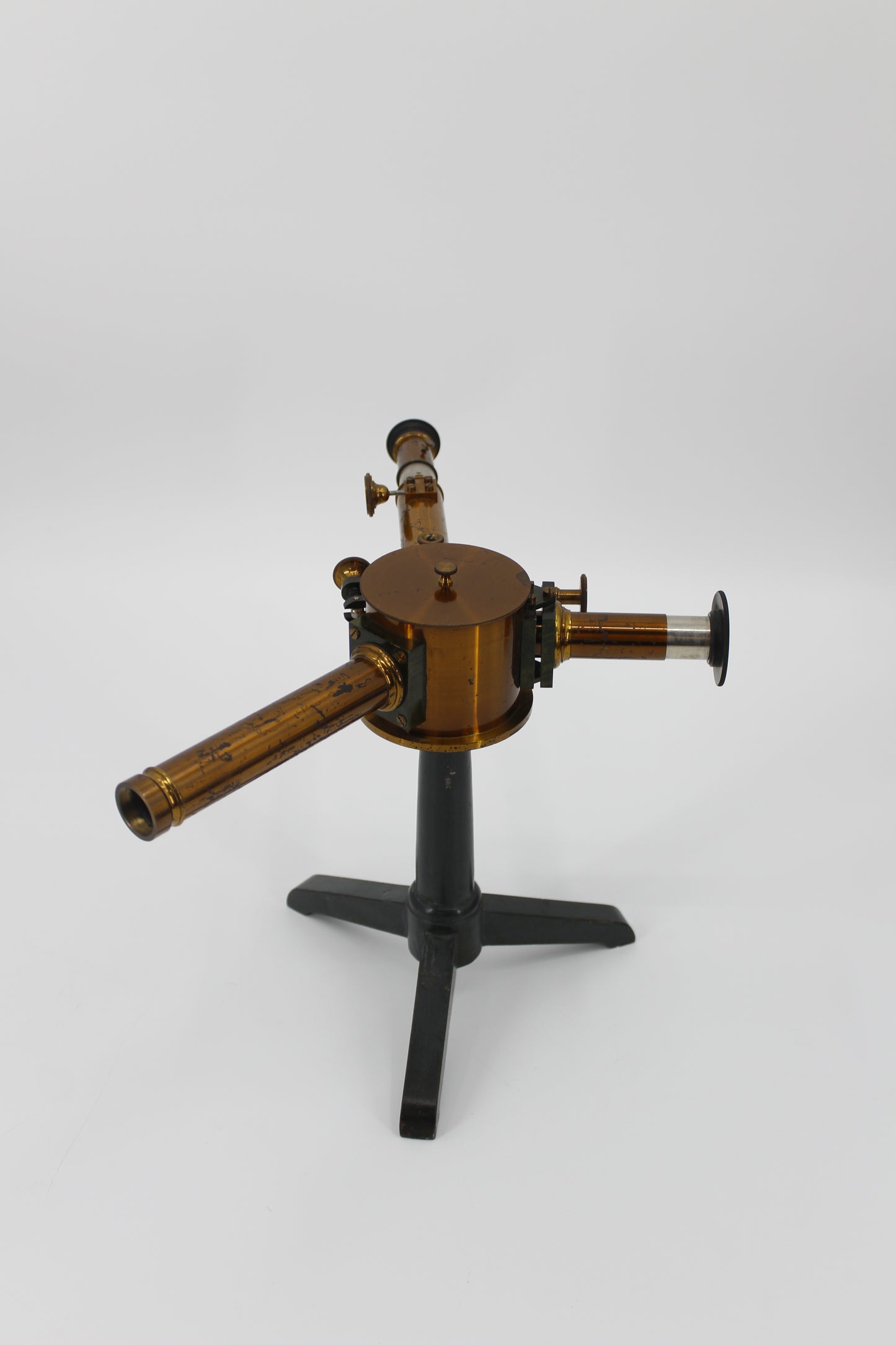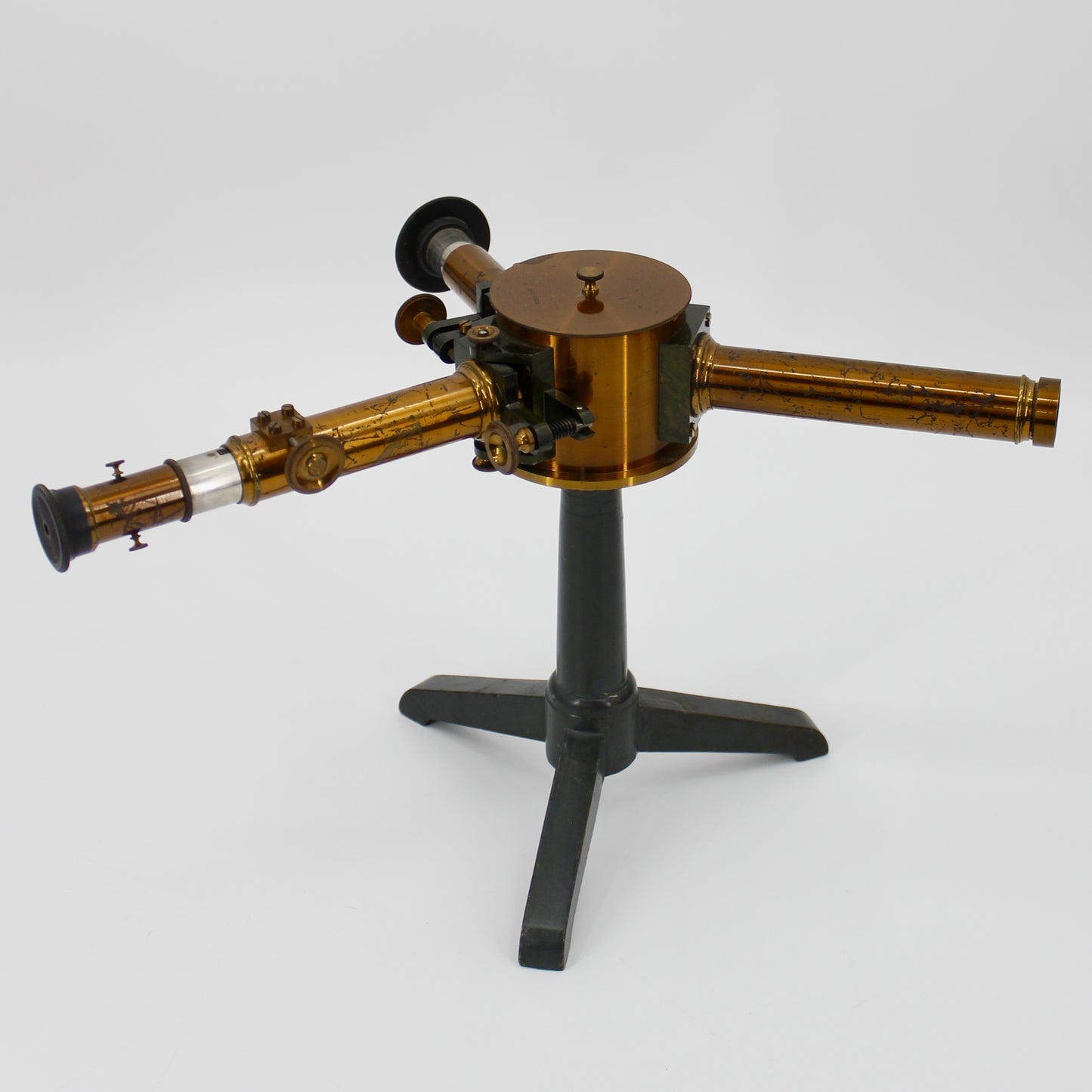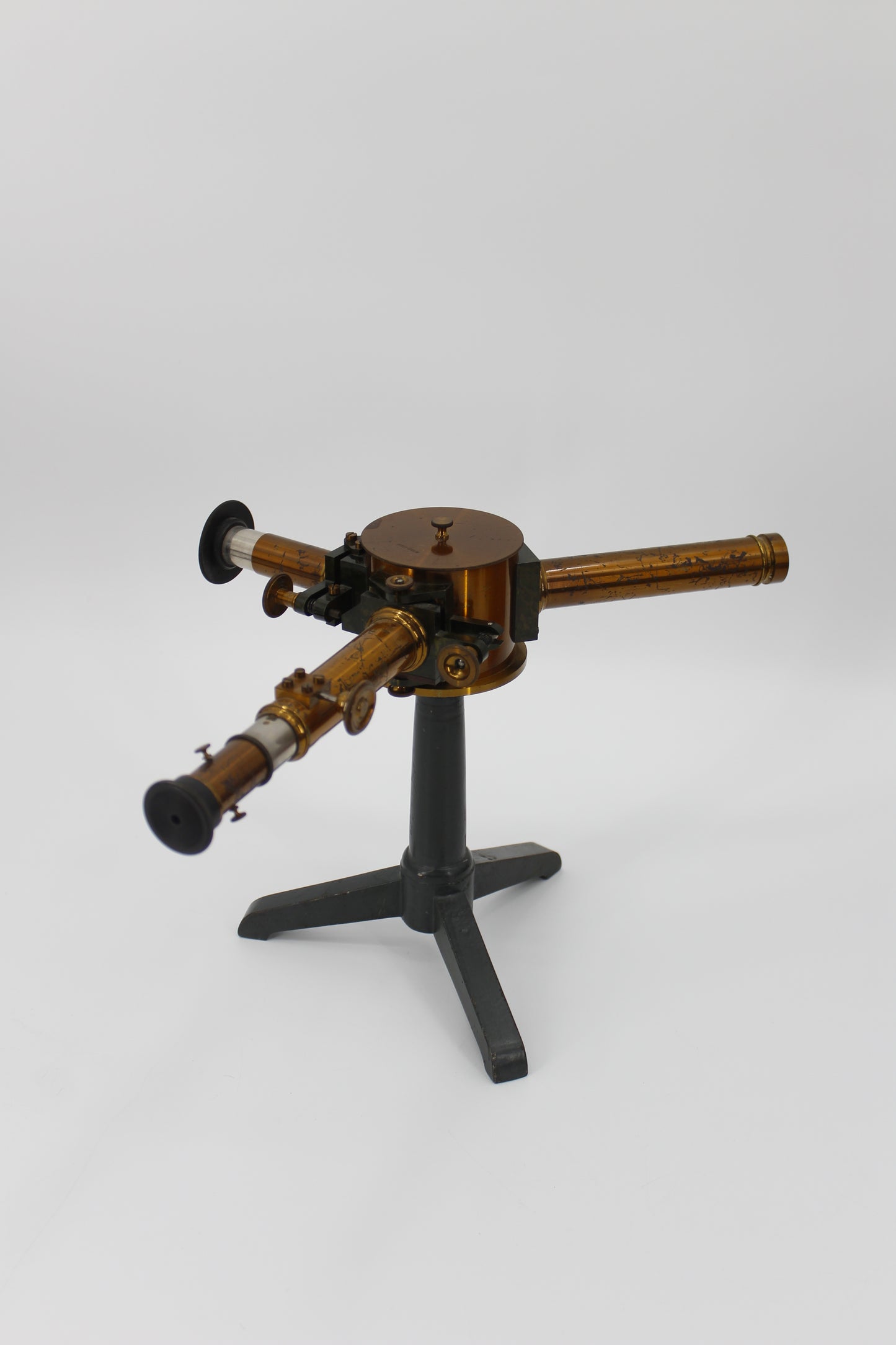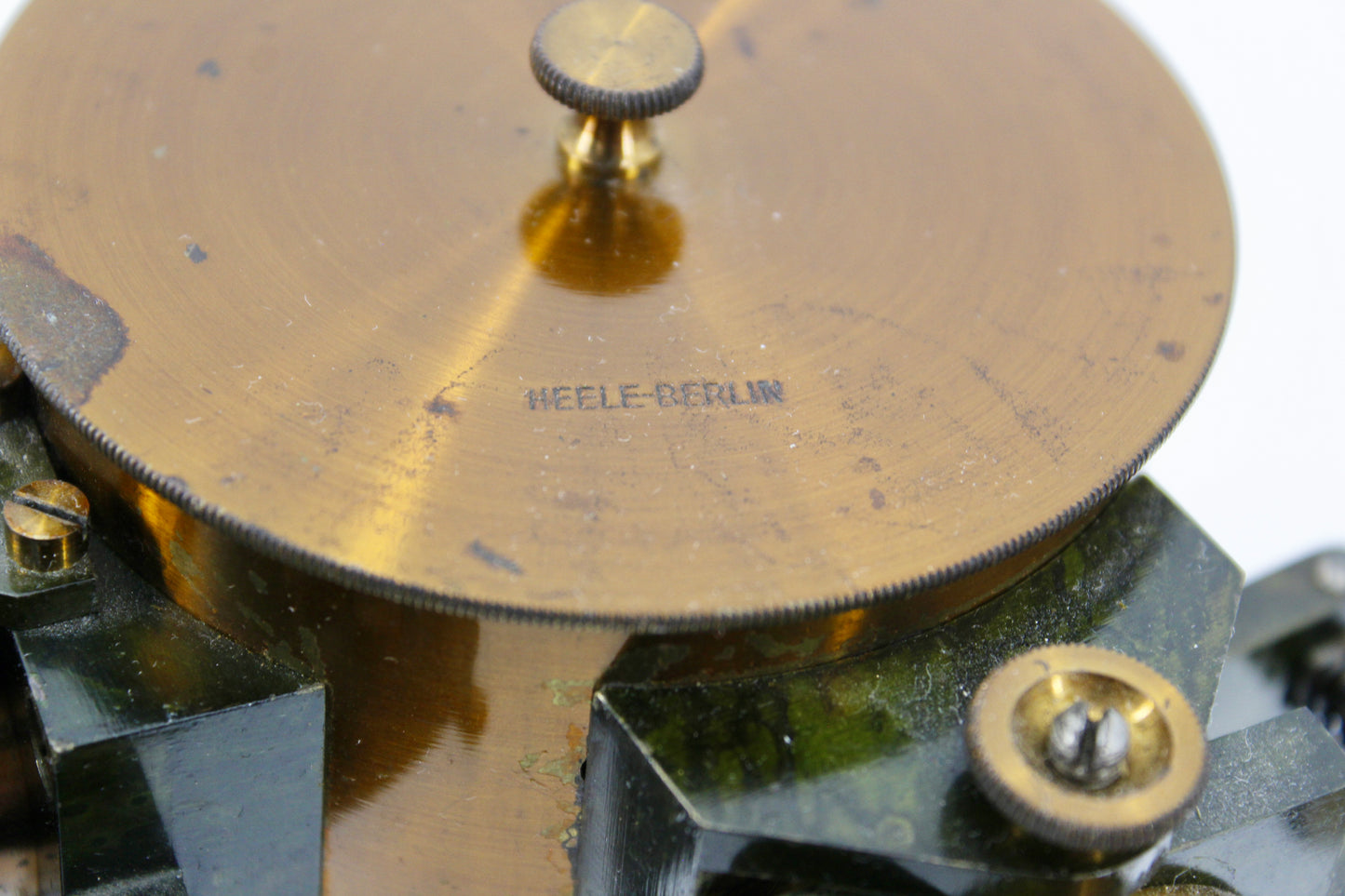Taylor Haus Galleries
Early Hans Heele Spectroscope
Early Hans Heele Spectroscope
Impossible de charger la disponibilité du service de retrait
Spectroscopy is used to study the elemental composition of a sample by looking at the samples interaction with electromagnetic radiation. Today we have advanced spectroscopy techniques that can provide information about the chemical composition of an analyte, down to the the types of bonds in a molecule
This antique three-arm spectroscope, however, represents an earlier stage in the evolution of the technique. It used simple light sources such as a gas flame or candle, positioned at one end of the instrument. The light passed through a narrow slit, known as the collimator, which aligned the beam for analysis. This device features two collimators: one longer, with a lens on one end and an adjustable slit on the other, and a shorter one with a fixed slit and a lens.
At the center of this instrument is a single flint-glass prism, housed in a brass metal box. As light from the flame enters the instrument, it passes through the prism, which disperses it into a spectrum. This spectrum is then viewed through a telescope, where it is overlaid with a scale reflected off the prism, allowing for measurement and analysis of the spectral lines.
This is a scare early model of the Three-Arm Brass Spectroscope by Hans Heele, circa 1893-1899. In post-1900 versions, this instrument would be stamped "IMPORTED BY ARTHUR H. THOMAS CO. PHILADELPHIA" on one leg. German made, signed 'Heele-Berlin'. Instrument is supported with weighted iron tripod base.
Featured in the Smithsonian's National Museum of American History
Further Information on Spectroscopes by Kenyon College.
Overall Dimensions: 16.00" x 12.00" x 10.75"
